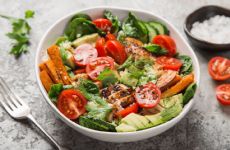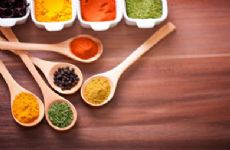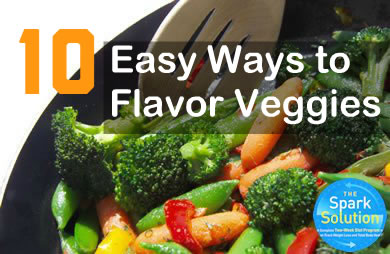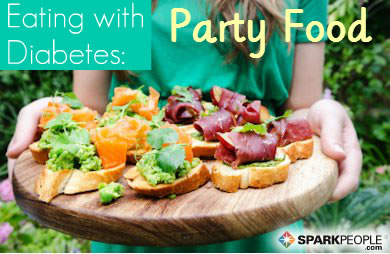|
Congratulations on making the decision to eat right! Now for the harder part: to figure out what "right" actually means. It's easy to get tricked by deceptive marketing into choosing foods that look and sound like smart choices—using buzzwords like "low-fat," "sugar-free" and "high-protein"—but are actually more hype than health. Junk food doesn’t always come in the form of donuts and potato chips. Or maybe you do have an idea of what the "right" foods are, but you're still hung up on how much you hated them as a kid. The good news is, much like your taste in music, your tastebuds can change right along with your lifestyle, especially if you start mixing things up and experimenting with new recipes. Maybe Brussels sprouts just weren't your mom's forte. To help kickstart your body-nourishing journey, we asked a few dietitians and nutritionists to suggest some health-boosting items to add to your repertoire this year. Consider this your cheat sheet for making the right food choices, and sticking with them! SorghumYou might not have heard of sorghum, but this gluten-free whole grain is gaining in popularity lately, and for good reason. As registered dietitian nutritionist Amanda Barnes points out, sorghum provides a bevy of health benefits—it's high in antioxidants, fiber, magnesium and vitamin B. As an Earth-friendly bonus, it's sustainable to grow because of its high drought tolerance. How to Try It Barnes suggests using this versatile whole grain in a breakfast bowl, substituting it for quinoa in a vegetable bowl or baking cookies with sorghum flour. Find some yummy sorghum recipes here. ChickpeasWhen it comes to choosing foods for healthy meals and snacks, dietitian Becky Hand makes sure they have met five key criteria: quick, tasty, versatile, healthy and budget-friendly. One food that satisfies all of these, Hand says, is the long-forgotten legume, the chickpea—also known as the garbanzo bean. Chickpeas contain a blend of both insoluble and soluble fiber. While the insoluble fiber helps to prevent constipation, the soluble kind works to maintain healthy cholesterol and blood-sugar levels. The nutrient benefits don’t stop there: Chickpeas are also high in plant protein, iron, folic acid and manganese. "Chickpeas have a very mild flavor and take on the taste of the other ingredients, spices and herbs used in the recipe," Hand says. How to Try It Hand suggests some delicious ways to go gaga for garbanzos:
Superfood PowdersYou've probably heard of superfoods—but what about superfood powders? Many trendy cafes are serving drinks and foods infused with health-boosting powders, such as matcha, maca, acai, spirulina and ashwagandha. Many of them have been used for centuries in ancient communities, but are now gaining modern popularity due to their numerous health benefits. "Rich in antioxidants, superfood powders have been shown to have many advantages, including reducing inflammation, anxiety and cholesterol," says Barnes. How to Try It It's super easy to incorporate superfood powders into smoothie bowls, teas, lattes, yogurt and pastries. MoringaMoringa is having a moment. Native to Asia and Africa, this dark-green leafy plant has been around for hundreds of years, but is only recently gaining popularity in America due to its incredible nutrition profile. "Moringa has all of the essential amino acids, and is high in plant-based protein and fiber," notes registered dietitian nutritionist Ilana Muhlstein. "Also, because it is so rich in iron and vitamin A, it is incredible for boosting energy and immunity. Moringa is also an adaptagen, which has been found to be helpful for lowering and managing stress." How to Try It Muhlstein adds moringa powder to her shakes every morning. The powder can also be sprinkled in tea, coffee, soups or on top of food, and can be added to bread and pastry dough before baking. You can also add moringa in its leaf form to pasta, salads or rice. Try to add the leaves after the food has been cooked, as excess heat can strip out some of the nutrients and beneficial enzymes. BeetsBeets are quickly becoming all the rage among athletes, says Nichole Dandrea, registered dietitian with Nicobella Organics. "Beets are a nitrate-rich food, a substance that turns into nitric oxide within our body," she says. "Nitric oxide dilates blood vessels and increases blood flow, helping to lower blood pressure, decrease clotting and improve endurance during cardiovascular exercise." Beets are a generous source of nutrients like potassium, betaine, magnesium, folate and vitamin C, and have been shown to improve cognitive function. How to Try It You might not have been crazy about beets as a child, but you'll likely be surprised by how delicious they can be. Try them steamed, roasted or cooked with olive oil and red wine vinegar. Beets also make great salad toppers. ArugulaNot only does it infuse foods with a delightfully spicy flavor, but this leafy green also delivers an abundance of nutrition, says registered dietitian nutritionist Jeanette Kimszal. It's chock full of antioxidants that help to fight inflammation. Plus, it contains the compound glucosinolate, an anti-carcinogen that helps to prevent free radicals from forming. Arugula's high volume of vitamin K is good for the heart, bones and skin, and helps to regulate calcium levels. Like other leafy greens, it has important minerals like magnesium, potassium, manganese, phosphorus and iron, which help to regulate cell function and improve oxygen circulation. How to Try It Kimszal recommends livening up your meals by adding arugula to soups and salads, or try baking and sautéing it with some garlic or your favorite spices and enjoying it as a healthy side dish. Steel Cut OatsMove over, avocado toast: Steel cut oats are making a comeback as a nourishing comfort breakfast. This type of oatmeal is made by chopping rather than rolling the oats, resulting in a thicker, chewier texture. Frida Harju Westman, a nutritionist at Lifesum, compares oats to a blank breakfast canvas, ready to be mixed with all your favorite delicious and nutritious toppings, including pear, raw dark chocolate, chia seeds and (hold on to your seat) avocado. "Oats are a filling, energy-boosting way to start the day, as they contain soluble fiber in much higher quantities than other grains, which helps reduce the absorption of cholesterol," Westman explains. "Studies have shown that a bowl of organic oats is enough to reduce your levels of harmful cholesterol, similar to the results of doctor-prescribed statins." How to Try It Whether you prefer your oats basic or bold, there are countless ways to prepare this very versatile breakfast food. Try the traditional stove top steel cut oats, seasoned with pumpkin or apples and cinnamon. You can even pep up your porridge by adding ingredients like peanut butter, bananas, peaches, a poached egg or any other toppings that tickle your fancy. High-Quality Coffee BeansMany of us can't imagine starting our day without java—but are you settling for sub-par sustenance? Weight loss therapist Dr. Candice Seti recommends giving your health a boost by upgrading to a better bean. "Coffee is most people’s single greatest source of antioxidants, but many of us are offsetting those benefits by adding sugar, artificial sweetener and processed creamers to our morning joe," she says. "By switching to a high-quality coffee, you may find you actually like the natural taste of coffee itself and don’t need to disguise it with all the sugar and processed ingredients. If you still need a little something to cut the bitterness, try adding in plain creamer from grass-fed cows or some coconut milk." How to Try It Try these tips for crafting the perfect cup of coffee, without any unhealthy additives. Chia SeedsFor an easy added source of extra fiber, protein and fat, sprinkle on some chia seeds. Kimszal points out that they're rich in omega-3s and fiber, which help to boost your brain, heart and digestive health. They also rate pretty high in the protein department, so you can bulk up your meal and stay full for longer. These tiny seeds pack in many essential minerals, like calcium, iron, magnesium and zinc. How to Try It "Adding chia seeds to your diet is super easy," says Kimszal. "Drop some in your yogurt, oatmeal or salad dressings, or add them to your favorite baked good recipe to get some extra protein and fiber." Plus, vegans can use them as a substitute for eggs in recipes. They even make a mean chocolate pudding (who knew?). KefirResearchers are learning more and more about the important role that a healthy gut plays in overall wellness—not just digestive health and weight loss, but also mental well-being. Instead of spending money on supplements, Barnes recommends using kefir, a fermented beverage similar to yogurt, to naturally improve the quality of your gut microbes. Made from milk proteins, yeasts and healthy bacteria, it’s chock full of probiotics. How to Try It Barnes suggests adding kefir to your smoothies, pouring it on cereal or granola instead of milk, or just drinking it on its own as a midday snack. Most kefir is made from dairy milk, but non-dairy versions can be made with rice milk, coconut milk, goat's milk or even coconut water. |
Popular Entries
More From SparkPeople |



.png)





.png)











